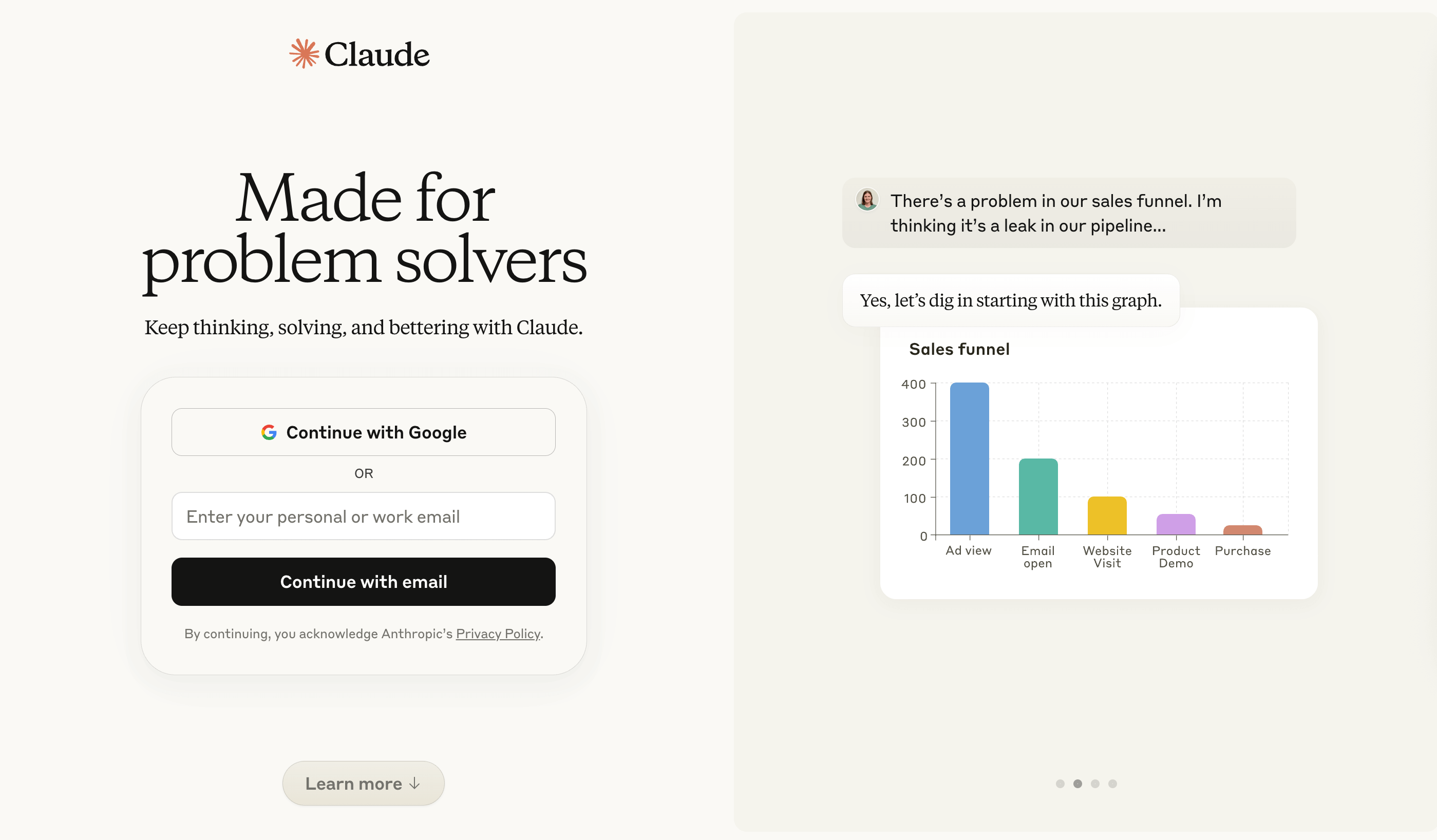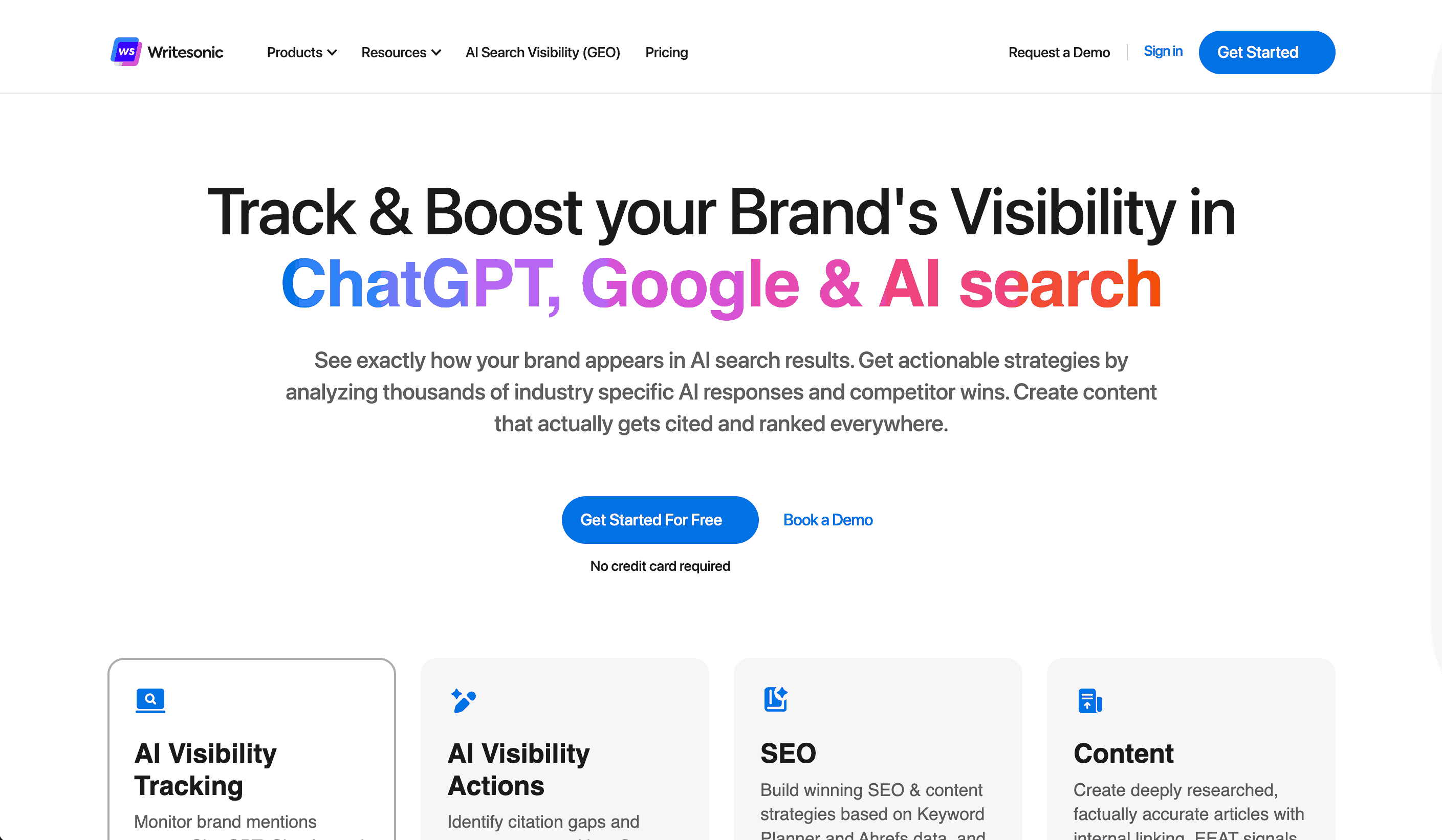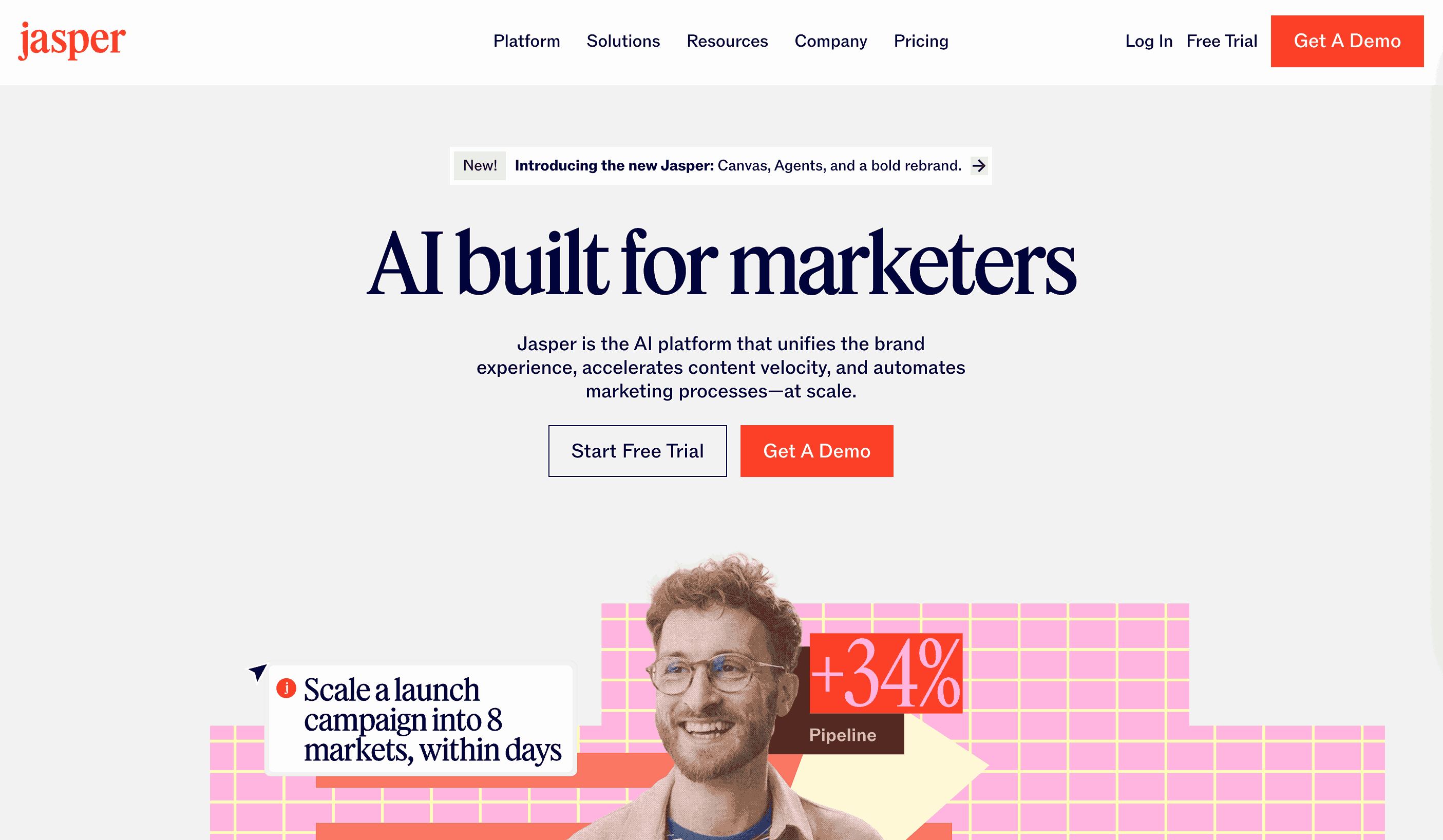I’m going to be straightforward: many teams I engage with treat AI writing tools as if they are a magic wand. They anticipate instant success, flawless SEO optimization or emails that convert five times more overnight.
That’s not the reality. However, if you approach these tools as strategic levers — specific, measurable and repeatable — they can revolutionize your workflow. This guide outlines what truly matters, which tools to use for specific tasks and how to create systems that transform chaotic output into predictable results.
Top AI Writing Tool Comparison Cheat Sheet
- Byword.ai — best for comprehensive content creation and optimization.
- ChatGPT / Claude — best for coherent, long-form content generation.
- Writesonic — best for ad copy and SEO-focused content.
- Copy.ai / Jasper — best for high-velocity marketing copy.
- Wordtune — best for rewriting and tone adjustment.
Why AI Writing Tools Are Essential Today
The hype cycle is behind us. Models are now faster, more coherent and better at maintaining context across extensive documents. This means AI can do more than generate short snippets — it can assist in planning a content calendar, drafting product specifications or writing long-form SEO content that remains consistent beyond the second paragraph.
To achieve reliable output, a strategic approach is necessary. Here’s the high-level why and how.
They Enhance Creativity and Minimize Friction
Writer’s block is a productivity tax. Combine AI tools with proven productivity strategies for consistent output. AI writing tools enable faster iteration — multiple headlines, various intros, diverse CTAs — allowing you to test and refine without starting from scratch.
This is crucial in content operations, paid advertising, email marketing and product copy. The objective: more experiments, faster learning.
They Ensure Consistency Across Channels
Brand voice fatigue is a genuine challenge. Utilizing AI to develop templates and tone profiles helps maintain consistent messaging across landing pages, emails and advertisements. A human touch is still necessary, but AI provides a repeatable foundation.
They Liberate Senior Creatives for Strategic Work
When junior writers and marketers use AI to draft content, senior staff can concentrate on strategy, storytelling and final polishing — the tasks that truly impact metrics.
Quick Primer: The Tools You Should Care About in 2025
Not all AI writing tools are created equal. Some are general-purpose, some are marketing-focused and others are specialized editors. Below are the most impactful platforms you should consider.
1. Byword.ai — Advanced AI Writing Platform

Byword.ai excels in providing a versatile platform for content creators, marketers and founders. It offers a seamless experience for generating high-quality content, optimizing SEO and ensuring brand consistency. Byword.ai is particularly effective for teams looking to streamline their content operations and enhance productivity. Its intuitive interface and robust analytics make it a favorite among professionals who need to manage large volumes of content efficiently.
2. ChatGPT / Claude — The Dynamic Duo

ChatGPT and Claude together offer a powerful combination for generating coherent, long-form content. ChatGPT is known for its conversational abilities and idea generation, while Claude excels in maintaining context and producing long, thoughtful, nuanced content. This duo is ideal for essays, research reports and whitepapers. Their ability to handle complex prompts and deliver detailed responses makes them invaluable for projects requiring depth and precision.
3. Writesonic — The Ad Copy Specialist

Writesonic is perfect for creating ad copy, landing pages and SEO-focused blog posts. It’s a valuable tool for teams aiming to produce high-quality content quickly and efficiently. Writesonic's strength lies in its ability to generate engaging and persuasive copy that resonates with target audiences, making it a go-to for marketing teams focused on conversion.
4. Copy.ai / Jasper — The Marketing Powerhouses

Copy.ai and Jasper are optimized for marketers, offering tools for creating ads, product descriptions, social media posts and headline variations. These platforms are designed for teams that rely on high-velocity copy experiments. Their extensive template libraries and AI-driven suggestions help marketers craft compelling messages that align with brand strategies and campaign goals.
5. Wordtune — The Rewriting and Tone Adjustment Expert

Wordtune focuses on rewriting, paraphrasing and tone adjustment, serving as a co-writing assistant for clarity and style. It’s ideal for teams looking to refine and polish their content. Wordtune's advanced algorithms ensure that the final output is not only grammatically correct but also stylistically aligned with the intended audience, enhancing readability and engagement.
How to Choose the Best AI Writing Tool for Your Team
Don’t select a tool just because it’s new or trendy. Choose it because it addresses a specific bottleneck.
Identify the Bottleneck
Are you struggling to generate ideas? Use generator-focused tools like Copy.ai or Writesonic.
Is your content inconsistent or error-prone? Consider tools like Wordtune for editing and tone adjustment.
Do you need coherence and reasoning in long-form content? Test ChatGPT and Claude with long-context prompts.
Run a 2-Week Experiment
Set a specific goal: reduce time-to-first-draft by 50% for blog posts or increase ad variant velocity from 5 to 30 per week. Compare tools based on cost, speed and quality against that metric.
Metrics to track: draft time, edit time, conversion lift (for ads/landing pages) and qualitative ratings from editors.
Consider Integration and Data Security
Does the tool integrate with your CMS, Google Docs or Slack? Can it store or access customer data safely? For enterprise and educational use, review the provider’s data handling policies. GPT-5, Anthropic and other platforms have distinct enterprise offerings worth exploring.
How to Effectively Use AI Writing Tools — A Repeatable Workflow
Here’s a practical workflow that transitions output from ‘AI-first draft’ to ‘publish-ready’ without wasting senior time.
1. Briefing (10–30 Minutes)

Start with a standardized brief template. Include: audience, intent, keywords, brand voice, length, references, competitive examples and a list of required sections.
Feed the brief and any reference links into the AI. With GPT-5’s large context window, include previous related posts or research notes so the AI can build on existing assets.
2. Generate Multiple Variants (10–20 Minutes)
Request 3–5 distinct directions: short-form, long-form, different tones (casual, authoritative, witty). For ad copy, generate 20+ micro-variations to A/B test quickly.
3. Human Edit Pass (30–90 Minutes)
Editors should focus on structure, factual verification and hooks — not line-by-line grammar (leave that to Wordtune). Keep edits focused and high-impact.
4. Quality Control and Fact-Checking
For technical or health-related claims, run dedicated checks. Use reliable sources and, where possible, add citations. Claude and GPT-5 have improved factuality, but always verify critical claims.
5. SEO and Distribution
Optimize headings, meta descriptions and internal links. Use AI SEO tools for title alternatives and meta descriptions, then pick the version that aligns with search intent. Schedule and test across email, social and search channels.
Common Pitfalls and How to Avoid Them
People make the same mistakes repeatedly. You can avoid them.
Pitfall: Over-Reliance on AI for Facts
Fix: Always have a human verify data points, quotes and statistics. Use authoritative links and include citations. If your content has legal, medical or financial claims, add expert review.
Pitfall: Using AI-Generated Text Verbatim
Fix: Treat AI drafts like structured brainstorming. Rework phrasing, check clarity and ensure the voice is on-brand. Use tools like Wordtune to polish tone and readability.
Pitfall: No Feedback Loop
Fix: Track performance and feed learnings back into prompts and templates. If a headline type consistently outperforms, codify it into your brief.
Cost, Plans and ROI — What to Expect

Pricing models vary: token/usage-based (OpenAI), tiered subscription (Writesonic) and per-seat for enterprise. Evaluate cost against throughput gains.
How to Build a Simple ROI Model
- Measure current baseline metrics: time-to-first-draft, edits per draft, conversion rate for key pages.
- Estimate improvement rates from a pilot (e.g., 40% faster drafting, 20% fewer edits).
- Translate time saved into hourly cost savings and increased output (more posts, more ad variants).
- Compare to subscription costs and expected lift in conversions/revenue.
If time saved and conversion lift exceed tool costs, you’ve got a win. If not, iterate on the process before doubling down on licenses.
Advanced Use Cases
Once you’ve mastered the basics, these are the higher-leverage ways teams are using AI writing tools in 2025.
Research Synthesis and Long-Form Reports
Use Claude or GPT-5 to synthesize multiple sources into a cohesive narrative. Because of longer context windows, the AI can reference earlier sections, keeping analysis consistent across chapters.
Content Personalization at Scale
Dynamic personalization — swapping headlines and CTAs based on user segments — is easier when you generate multiple tailored variants, test them programmatically and feed performance back into the model prompts.
Product Documentation and Internal Knowledge Bases
AI can convert feature notes and commit messages into user-friendly docs. The result: fresher onboarding materials and fewer tickets for basic questions.
Where to Start Tomorrow (My Recommended Checklist)
If you only do three things this week, do these:
- Create a one-page brief template and standardize it across your team.
- Run a 2-week pilot comparing two tools against one measurable goal (draft time or ad variants).
- Set up an editorial QC process: AI draft → human structural edit → Wordtune polish → fact-check → publish.
Final Challenge
Take a hard look at your content operations. Bucket your needs into: idea generation, draft production, editing/polish and publishing. Which single lever, if removed, would free the most time for high-leverage work?
If your answer is “draft production,” run a small pilot with GPT-5 and Copy.ai. If it’s “quality control,” test Wordtune. If it’s “long-form coherence,” try Claude on a short whitepaper.
You’ll learn faster by doing. And if you approach AI writing tools as a set of levers rather than a magic button, you’ll stop hoping for virality and start building predictable, repeatable growth.
Now pick one workflow, run a two-week experiment and come back with the results. You’ll be surprised how quickly a small process changes compounds into big gains.
FAQ: AI Writing Tools in 2025
What's the best AI writing tool overall in 2025?
It depends on your needs. Byword.ai is the most well-rounded for content creation and SEO. If you want long-form depth, the ChatGPT + Claude combo is unbeatable. For ad copy, Writesonic shines.
Which AI writing tool is best for SEO blog posts?
Byword.ai and Writesonic are both great picks. They can help you target keywords, optimize headings, and keep your tone consistent across articles.
Can AI writing tools fully replace human writers?
Nope — they’re more like power tools. AI can draft faster, suggest ideas, and even rewrite for clarity, but humans are still essential for storytelling, fact-checking, and brand personality.
What's the cheapest AI writing tool worth trying?
Writesonic offers affordable starter plans. Wordtune is also budget-friendly if you mostly need rewriting and tone adjustments rather than full drafts.
How do I choose the right AI writing tool for my team?
Identify your bottleneck first — ideas, drafting speed, or editing quality. Then run a 2-week trial with 2–3 tools and compare speed, accuracy, and how much editing they need.
Are AI writing tools safe to use for business content?
Yes, but always check their data policies. If you work with sensitive or customer-specific data, make sure the tool offers enterprise-level security and doesn’t train on your content.
How much do AI writing tools cost?
Expect anywhere from $15/month for individual plans to $100+ per seat for enterprise features. The best approach is to test ROI — if the time saved outweighs the subscription, it’s worth it.
.svg)










